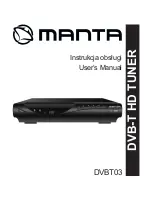
iTuner Manual
12
4
iTuner Command Language
Using the iTuner in Load Pull Explorer is sufficient for many applications. However, some more
specialized applications require independence from Load Pull Explorer, or even the whole
Windows environment. For this reason the iTuner provides a raw TCP/IP interface that can be
used with any socket programming language, or through any telnet client program. To connect
to the iTuner using telnet, use the same procedure of creating a new HyperTerminal connection
(outlined in section 2.2). For connecting to the iTuner using the programming language of
choice (Visual C++, Borland C++, C#, Agilent VEE, Labview, or other) refer to their TCP/IP socket
documentation.
4.1
Introduction
Communication with the tuner is established by opening a socket on port 23 of the IP address
defined in the EEPROM of the tuner. The current IP address of the tuner is shown on the display
of the tuner after power-up. The tuner ‘listens’ on the TCP/IP port for an incoming connection.
Once a connection with a client has been established, the IP address of the client is shown on
the display of the tuner:
Connected to
10.0.0.100
The tuner accepts only one connection at a time. Connection attempts to an already connected
tuner will fail with a time-out. The tuner will switch back to ‘listen’ mode once the active
connection has been closed properly. In case the controlling software has to been terminated
without closing the connection, one has to reset the tuner to ‘listen’ mode by removing the DC
power.
The tuner sends a command prompt when it is ready to receive a command:
CCMT->
NOTE: By default, the tuner ‘echoes’ all incoming commands. Echoing can be turned off by
sending the ‘ECHO OFF’ command.
Incoming commands are checked for syntax and validity, and a reply is send back to the client
with result code, an ID#, and a short error message in case of an error.
Commands are not case sensitive, thus INIT, init, and Init are considered identical.
Commands have to be terminated by either the carriage return (0x10) or the line feed (0x13)
character.















































